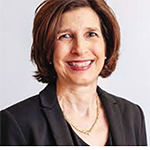Background & Objectives
Mannion et al. set out to describe the adult rheumatology workforce in the U.S. by measuring the number of rheumatologists and advanced practice providers entering and exiting the field and studying their demographics. Prior workforce studies have projected significant shortages of rheumatology providers, with the supply unable to keep up with the demands of the aging U.S. population.
Methods
The researchers used data collected from Medicare claims made between 2006 and 2020 to identify clinically active rheumatologists and advanced practice providers. Clinicians were categorized as entering, exiting or stable, based on the presence or absence of data in prior or subsequent years. The researchers determined characteristics of rheumatologists, such as gender, practice type and region. Using logistical regression, the researchers compared the demographics of physicians exiting or entering the rheumatology workforce with those considered stable.
Results
According to Mannion et al., the clinically active, adult rheumatology workforce in 2019 was 5,667 rheumatologists and 379 advanced practice providers. From 2009 to 2020, the number of rheumatologists increased 23% and the number of advanced practice providers increased 141%. There was an increase in women rheumatologists over time, rising to 43% in 2019. Women and those employed by a healthcare system were more likely to exit, and those in a small practice or in the South were less likely to exit.
Conclusions
The overall number of clinically active rheumatology providers grew more than 20% over the past decade to a high of 6,036 in 2020, although this rate of growth appears to be flattening in later years. Even with the increase in the number of rheumatology clinicians, there remains a greater demand for rheumatic care that must be addressed.
For complete details, including source material, refer to the full study.
Excerpted and Adapted From:
Mannion ML, Xie F, FitzGerald JD, et al. Changes in the workforce characteristics of providers who care for adult patients with rheumatologic and musculoskeletal disease in the United States. Arthritis Rheumatol. 2024 July;76(7):



